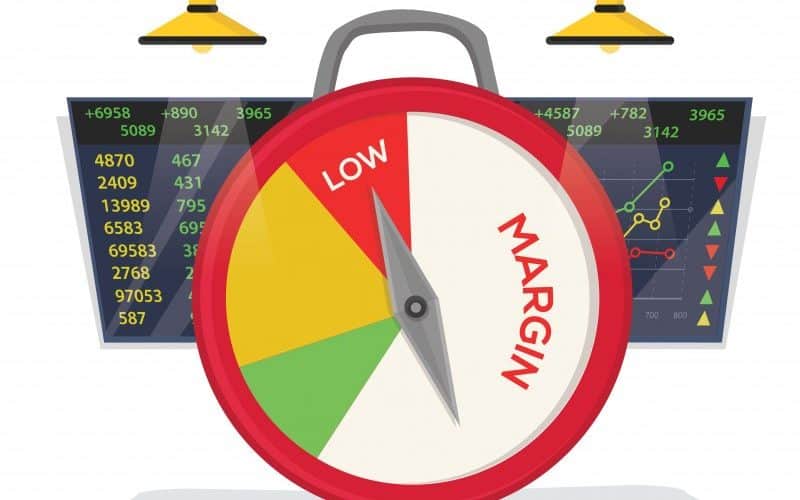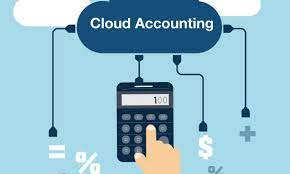Gross profit margin is an important financial metric for both company managers and investors since it reveals how efficiently a company can create and sell one or more products before deducting superfluous expenditures. The cost of items sold by the company determines the gross profit margin. Depending on the scenario, one can compare it to the operating profit margin and net profit margin. It, like other financial measures, is only useful if the equation’s inputs are right. So, we are going to see the formula of the gross profit margin and how to calculate this financial ratio.
What Is Gross Profit Margin?
This is a financial ratio used by managers to evaluate the effectiveness of the manufacturing process for a single product or several products sold by the company. One product may be more efficient for a company to produce and sell than another. You can estimate the gross profit for each product as long as the company can identify the direct costs of making each product from the others. On a company’s revenue statement, the cost of goods sold accounts for the direct costs of producing their items.
Read Also: MRR: What Is MRR (Monthly Recurring Revenue)?
Direct Costs
Direct costs are those that are directly related to a cost object, which could be a product, department, or project.
The direct costs of the company are included in the cost of goods sold. You consider only direct costs, not indirect costs. Direct costs are typically changeable. These variable expenses vary according to the quantity of product. Direct labor, which involves effort done solely on a certain product, is one example. Another direct cost is direct materials, which may comprise raw materials required to manufacture the product.
It can be best understood when expressed as a financial ratio, as follows:
- The cost of products sold is compared to the net sales of the company.
- Net sales are total sales less any returns, as calculated from the company’s income statement.
- The cost of goods sold, which is also included in the income statement, is the direct cost of producing the company’s product or items.
Only companies who produce their own goods will have direct costs and, as a result, the cost of goods sold on their income statement. Firms that sell a service usually have a very low or nil cost of products sold.
The profit margin, like other financial measures, is only significant in comparison. The finance management may wish to utilize trend analysis to compare it to that of previous time periods, or industry analysis to compare it to that of other similar companies.
Gross Profit Margin Formula
To get the gross profit margin, you will have to use the formula. GP margin is the percentage of revenue remaining after deducting the cost of products sales. Use the following gross profit margin formula:
Gross Profit Margin = (Net Sales – Cost of Goods Sold) / Net Sales
After doing the computation from the formula, you will obtain a percentage that represents the company’s gross profit margin.
How to Calculate Gross Profit Margin
We calculate the GP margin using only two variables: net sales and the cost of goods sold. One can find both figures on the company’s income statement:
#1. Net Revenues
Because Total Revenue will be inaccurate, we use Net Sales, or Net Revenue, in the computation. To calculate the net amount, deduct any returns, discounts, and allowances from Total Sales.
#2. Cost of Goods Sold
The cost of goods sold (COGS) is the total of a company’s product’s production expenses. It comprises direct costs of production such as direct materials and direct labor. We don’t consider indirect costs in the calculation. There is some leeway in the costs that go into the cost of goods sold calculation. It varies depending on the industry in which the company operates. The cost of goods sold does not include general corporate expenses such as sales and administration charges, marketing costs, and the majority of fixed costs.
Read Also: Financial Performance: A Comprehensive Guide For Any Business(+ quick tools)
Use of Gross Profit Margin Example
Because the gross profit margin ratio only requires two variables, net sales, and cost of goods sold, you can calculate it using a company’s income statement.
Assume XYZ, Inc.’s latest financial statement shows $75 million in net sales and $68 million in cost of goods sold. How big is it?
$75 million – $68 million / $75 million = 0.0933, or 9.33%.
XYZ, Inc. has a gross profit of 9.33 percent.
This means that 90.67% of the firm’s profits were used to cover the cost of goods sold or to create the product that the firm produces, leaving 9.33 percent for additional expenses and net profit. To figure out what 9,33 percent means, compare it to other years of firm data or other companies in the industry.
If it is much lower or higher than in previous years of data, you should investigate why. If it differs significantly from other organizations in the industry, you should look into it as well.
Gross Profit Margin Ratio (Good vs. Bad)
Small business owners must be able to interpret the financial ratios of their organization. Here are some examples of how the gross margin ratio can be interpreted.
#1. Company Production Efficiency
It is a measure of the efficiency of a company’s manufacturing process. A high percentage indicates that a corporation is producing its goods more effectively. The finance manager might compare the GP margin of a company to other companies in the same industry or to other time periods for the same company.
Company executives must delve deeper to identify all of the components that contribute to it.
#2. Reduced Productivity in the Manufacturing Process
A lower percentage indicates that a corporation is not producing its goods as efficiently. This would be determined if it is decreasing over time or if it is lower than that of other companies in the same industry.
#3. Sales are Low.
A low sales volume does not necessarily imply a poor GP margin. However, if sales volume is insufficient to pay other corporate expenses such as sales and administrative costs, it is meaningless.
#4. Inadequate Pricing Structure
A poor pricing strategy can result in a low GP margin.
Which Industry has the Highest Profit margin?
Businesses having the largest profit margins are typically service-oriented. This is due to the fact that they do not incur the expenditures connected with manufacturing a product.
According to Inc.com, the most profitable and least profitable industries are those with the highest net profit margins.
Why do some businesses produce goods while plainly service-oriented enterprises benefit more? If the company is large, it could be due to volume.
A larger company can transport more goods and make more money.
Gross Profit Margin vs. Gross Profit
Both gross profit and gross profit margin measure a company’s profitability by comparing revenue to production expenses. The primary distinction is that gross profit is a monetary number, whereas gross profit margin is a percentage.
Gross profit is the amount of revenue a corporation gets after deducting manufacturing costs. The gross profit formula deducts the cost of items sold from revenue to determine the amount available to finance indirect expenses and investments.
The gross profit margin, on the other hand, represents the gross profit as a percentage of revenue and is computed by dividing the gross profit by the revenue. This percentage figure represents the fraction of revenue that is not consumed by the direct costs of manufacturing the goods or services for sale. It reflects how effectively the company earns gross profit from revenue. The greater the margin, the more money a corporation receives for every dollar invested in production.
Gross Profit Margin vs. Net Profit Margin
Both net profit margin and gross profit margin are used to determine a company’s profitability, but there is one significant difference:
Net profit margin is a measure of the percentage of revenue that remains after all expenses have been deducted. This measure shows how much profit is generated for every dollar of revenue. It is determined by dividing net profit (gross profit minus operating and other expenses) by revenue.
The gross profit margin is the percentage of revenue that remains after deducting production costs. It shows how much profit a corporation makes for every dollar spent on production. It is computed by dividing gross profit (revenue minus costs of goods sold) by revenue.
Why do you need to Calculate Gross Profit Margin?
When we Calculate the gross profit margin, it assists a company’s management to gain a better understanding of its overall profitability. However, it does not take into account critical financial issues such as administration and labor expenditures, which are factors in the operating margin calculation.
If not managed appropriately, these indirect costs can significantly reduce a company’s profit. Administration and personnel expenditures are frequently the first areas where management will make cuts because they have no impact on a company’s core operations, which are critical to its existence.
What is Gross Profit Margin (GPM)?
Gross Profit Margin is a profitability ratio that calculates the amount of profit made by a company before deducting overhead costs, taxes, and other expenses. It’s expressed as a percentage and indicates the amount of revenue that exceeds the cost of goods sold.
What does a high Gross Profit Margin indicate?
A high Gross Profit Margin means a company is generating more profit from its sales, indicating efficient management of costs and the ability to set higher prices for its products or services.
What does a low Gross Profit Margin indicate?
A low Gross Profit Margin suggests that a company is not efficiently managing its costs, which could result in lower profitability. It may also indicate that the company is unable to increase prices for its products or services, or that its products or services are not in high demand.
How is Gross Profit Margin calculated?
Gross Profit Margin is calculated by dividing Gross Profit by Total Revenue and multiplying by 100 to get a percentage. Gross Profit is calculated as Total Revenue minus the Cost of Goods Sold (COGS).
What are some ways to improve Gross Profit Margin?
Improving Gross Profit Margin may involve reducing the cost of goods sold, increasing the selling price, reducing overhead costs, improving efficiency and productivity, and increasing sales volume.
How does Gross Profit Margin differ from Gross Profit?
Gross Profit is the profit made by a company after deducting the cost of goods sold from its total revenue. Gross Profit Margin, on the other hand, is a ratio that expresses Gross Profit as a percentage of total revenue, indicating the efficiency of the company’s cost management.
Gross Profit Margin FAQs
How do we calculate gross profit margin?
Gross profit margin is calculated by subtracting direct expenses from net revenue, dividing the result by net revenue, and multiplying by 100%. A higher gross profit margin means the company has more cash to pay for indirect and other costs such as interest and one-time expenses.
What does gross margin tell us?
Gross margin equates to net sales minus the cost of goods sold. The gross margin shows the amount of profit made before deducting selling, general, and administrative (SG&A) costs. Gross margin can also be called gross profit margin, which is gross profit divided by net sales.
How do I calculate a 40% margin?
Wholesale to Retail Calculation
If a new product costs $70 and you want to keep the 40 percent profit margin, divide the $70 by 1 minus 40 percent – 0.40 in decimal. The $70 divided by 0.60 produces a price of $116.67. The profit margin in dollars comes out to $46.67.
What is the difference between profit and gross margin?
Gross profit and gross margin both measure a company’s profitability using its revenue and cost of goods sold (COGS), but there is one key difference. … Gross profit is a fixed dollar amount, while gross margin is a ratio






